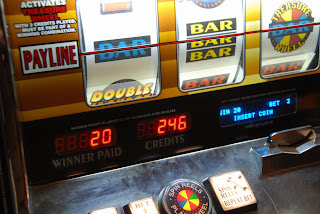Trademark Application Timeline, Take One
I spent a few posts detailing the various pieces of virtual paper it takes to get and keep a trademark this week. But I thought it'd be a good idea to detail a timeline of the trademark application process.
Federal Trademark Application Timeline, In Use Application
Step 1: File
Assuming you've had all your comprehensive research completed & the name is clear, the first step is to file the application. The application is available online through the USPTO. TradeMark Express includes preparation & submission as part of our package.Step 2: Receive a Filing Receipt
The day the application is filed, the USPTO will email you a confirmation that the application is received. This receipt includes your serial number, the filing date and a summary of the application.
How Long? Should be same day. If you do NOT receive a filing receipt the same day, contact the USPTO at TEAS@uspto.gov
Step 3: Assigned to Examiner
An examiner is "a USPTO employee who examines (reviews and determines compliance with the legal and regulatory requirements of) an application for registration of a federally registered trademark." This will be the individual you'll correspond with about your application during the registration process. See this post for further details.
The time periods for the rest of this process are going to vary so the following are approximations...
How Long? About 3 months, though could be sooner or later.Step 4: Examination Begins
Your examining attorney will review your application & should any issues arise that need to be dealt with will come via email in an Office Action. Office Actions can be comprised of a number of things. Some of the most common issues are a disclaimer is needed, a re-wording of the goods/services description is needed and the mark is refused based on likelihood of confusion, which is why you have comprehensive research done first to ensure that this doesn't happen. See this post for further details.
How Long? Anywhere from 1-3 months seems to be the average length of time it's taking the examining attorneys to send out Office Actions. This can be shorter if the application is filed correctly from the get go.
Step 5: Notice of Publication
Provided that there are no objections from the examining attorney and/or you've responded to their Office Actions satisfactorily, the application then moves to publication. Publication is in the Daily Gazette, a USPTO online publication and is for 30 days. "Any party who believes it may be damaged by registration of the mark has thirty (30) days from the publication date to file either an opposition to registration or a request to extend the time to oppose."
After this, as long as no one files an objection to your application, you will move into a holding period, then finalization for registration, then registration.
How Long? This process should take approximately 12 weeks.
Step 6: Registration
Once the publication period is over, the mark becomes registered. You'll also be assigned a registration number.
All in all, it could take a year (if there are no issues) to a year & a half (if there are hiccups like Office Actions) to be granted registration for an in use application. However, be rest assured that the USPTO does take note of your pending application. If a filing comes in AFTER your application, they will know that you were first in line.
 The Masters are coming to a casino near you or so I assume based on the 3 newest filings from High 5 Games for gaming machines:
The Masters are coming to a casino near you or so I assume based on the 3 newest filings from High 5 Games for gaming machines: 














